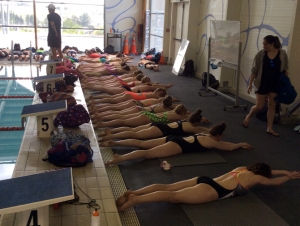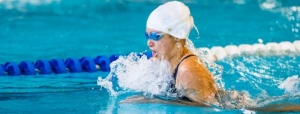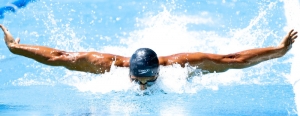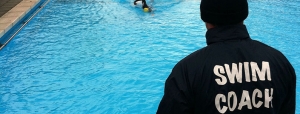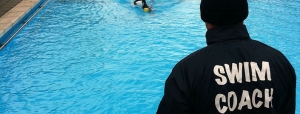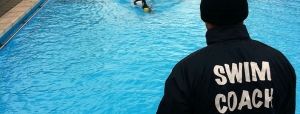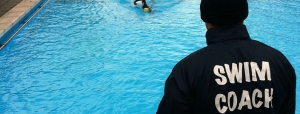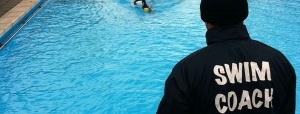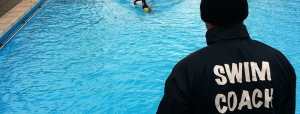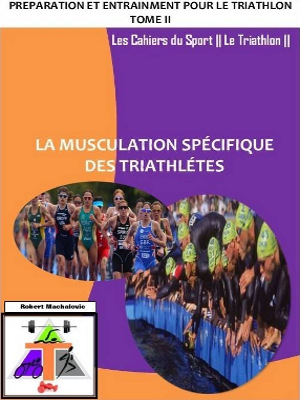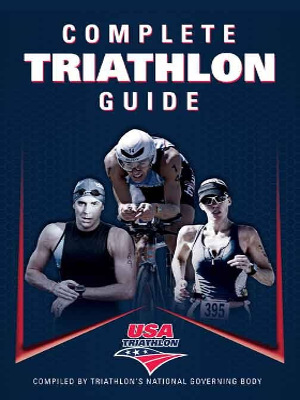
EL HAOUAT MedHassan
DEVELOPMENT OF BASIC AND SPECIAL ENDURANCE IN AGE-GROUP SWIMMERS
A RUSSIAN PERSPECTIVE
Multi-year Training (MYT) is necessary to achieve top international level performances in competitive swimming. The ultimate goal of MYT is the optimal development of motor abilities, functional power, physiological capacities, and movement efficiency. The current age range for top achievements in swimming is 17-20 years for females and 19-22 years for males. Thus, the extent of long-term training should cover a period from 10-12 years since the average age for commencing purposeful training should be 8-9 years for girls and 10-11 years for boys. The duration of MYT may differ between individuals according to the age when they start training and their rate of biological maturation.
In accordance with known patterns of growth and development of motor and psychological abilities, MYT to the time when excellence should be achieved is subdivided into several stages. Each stage has its own objectives primarily determined by the peculiarity of development and maturity. Four stages of MYT are commonly proposed and are the foundation for planning of training for young swimmers (Bulgakova, 1986; Nabatnikova, 1982; Vorontsov, Chebotareva, & Solomatin, 1990).
1. THE STAGE OF PRELIMINARY SPORT PREPARATIONThe optimal age to initiate MYT for swimming is 7-9 years for girls and 8-10 years for boys. Beginning earlier will simply increase the total duration and cost of MYT without any significant eventual benefit because of the very slow physical growth and development of children within the age range of 5-8 years. A too-early start also may lead to an early loss of interest in swimming as a competitive sport. The duration of this preliminary sport preparation is 1-2 years. The Stage of Preliminary Sport Preparation Objectives
The important content of this stage is learning basic swimming techniques while employing a large number of preparatory and special exercises with a major accent on enjoyment. The frequency of practices should gradually increase from 3 to 5-6 per week which automatically leads to an increase in the total training load and an increase in both swimming and general physical fitness. 2. THE STAGE OF BASIC TRAININGThe average age to begin the Stage of Basic Training is 9-10 years for girls and 10-11 years for boys. Normally, this stage lasts from 3-4 years. The Stage of Basic Training Objectives
This stage of MYT is the most important for the development of aerobic capabilities of young swimmers. It is characterized by a progressive annual increase in total swimming volume and general physical land-exercises. The total swimming volume in the last year of this stage may reach 1200-1400 km for girls and 1000-1200 km for boys. An analysis of the most successful coaches reveals that optimal workloads in the total training volume include 60-65% aerobic exercises, 25-30% of "mixed" aerobic-anaerobic activities, and 2-3% of anaerobic glycolytic and alactic work. As swimmers grow, pulling power and speed of swimming during workouts should increase. This is assisted by using additional resistance (e.g., belts, paddles) and stretch cords. Despite a notable increase in aerobic capacity and efficiency, the ability to perform training workloads at the level of maximal oxygen uptake and anaerobic abilities are very limited when compared to older swimmers. The development of anaerobic abilities is achieved mostly by periodic use of glycolytic and alactic training exercises and an annual increase in the number of competitions. Extensive volumes of high-speed interval training at this stage of MYT are very often accompanied by stress symptoms such as a decrease of general and specific immunity and a higher-than-normal frequency of minor and major illnesses. It is very important to teach young athletes the proper techniques of strength exercises which employ free weights (e.g., dumbbells, barbells) and pulling devices (e.g., stretch-cords, biokinetic benches, the Vasa swim trainer, pulley weights). The preferred choice to develop muscular power and strengthening of connective tissues (e.g., tendons and ligaments) should be through "natural" motor exercises (e.g., push-ups, chin-ups, squats, sit-ups) which use the individual's body weight as the loading factor. The major emphasis should be on the development of muscular endurance in exercises involving big muscle groups or the whole body. The implementation of different exercises with low resistance and high repetitions promotes muscular endurance. The organization of appropriate training may be circuit training as well as station training. The main benefits of such training are reduction in energy costs and improved regulation of muscle contractions and coordination. It takes a long time to teach young athletes the art of perfect coordination. Near the end of this stage of MYT it is important to introduce land training exercises with both high and submaximal resistances. The development of specific pulling force in the water in young swimmers is a very influential factor for forming effective swimming techniques. It is achieved by teaching conscious control of discerning the optimal ratio between stroke rate and stroke distance with an accent on stroke distance. 3. THE STAGE OF SPECIALIZATIONGirl swimmers usually enter this stage between 12-14 years of age whereas boys, who normally lag 1-2 years behind girls because of a difference in maturation rates, enter between 13-15 years of age. The readiness of a young swimmer for increased training demands will be governed by the individual's biological age (level of maturation). Maturation affects morphological growth, motor skill, and functional development. The duration of this stage is 3-4 years. The Stage of Specialization Objectives
At this stage of MYT the preparation of swimmers should become even more individualized. Starting with the onset of puberty, training volumes and intensities may be increased unevenly. Up to the ages of 12-13 years for girls and 14-15 years for boys aerobic training should be accompanied by performance improvements in short as well as long distance races. In contrast, at older ages aerobic training only exerts a direct influence on distance swimming results. Anaerobic power and capacity and strength grow very rapidly in adolescents in concert with muscle mass increase. These factors affect sprint and middle-distance swimming. The rapid growth of muscle mass and glycogen stores, coupled with a rise in secretion of adrenaline and noradrenaline and sexual hormones creates an optimal biological background for development of anaerobic abilities, maximal power, specific muscular endurance, and speed-strength abilities. Consequently, training has to be altered to reflect these developmental changes. An increase in the volume of anaerobic and strength training at this stage of MYT positively affects the development of special working capability only if a swimmer had performed a significant volume of aerobic training in the earlier stages. A high level of aerobic capacity is an important basis for developing muscular endurance and general resistance to physical stress. Total training volume in the final year of this stage may reach 1600-1900 km comprised of 65-85% aerobic swimming, 15-30% of mixed glycolytic training, and 5-6% of alactic (sprint) training. The positive transfer to swimming of working ability developed in other types of physical exercises (e.g., running, skiing, rowing) decreases as this stage progresses. The primary stimulus for developing special swimming capability is swimming with good technique. 4. THE STAGE OF EXCELLENCEThe average age to start training to achieve swimming excellence is 15-16 years for girls and 16-19 years for boys. This stage is the opportunity to achieve the ultimate goal of MYT, the maximal level of physical, functional, and motor development which should lead to the realization of maximum performance appropriate for a swimmer's potential. The Stage of Excellence Objectives
During this stage, growth of physical and motor capacities slows with the deceleration of maturation. Eventually, growth and the potential to develop capacities cease. The important factor for further improvements in performance will come from increasing the annual training volume in girls 15-16 years of age and boys 16-18 years of age. If too much training is done in the years prior to these one should not expect most young swimmers to achieve a top international level of performance although some exceptional individuals do. The primary training goal in the Stage of Excellence is mastering maximal swimming volume: 1800-2200 km per year for sprinters, 2200-2600 km for middle distance swimmers, and 2600-3000 km for distance swimmers. Since the potential to increase training volumes has physiological and time limits, once growth has ceased the perfection of physical condition will be determined by the intensity of swimming and strength training, involvement in training devices such as water flumes, isokinetic machines which create specific regimens of muscle activity, and implementation of advancements in physiotherapy and nutrition. The proportion of anaerobic work rises to 15-18% of the total training volume with sprint training comprising 3-6%. Another important feature of this stage is the start of full scale intensive strength training which will consume 250-300 hours annually. The nature of strength training also changes. The completion of maturation means that swimmers can withstand large volumes of power training using both high and submaximal resistances. The objective of the land training in this stage is the development of maximal power of specific "swimming" muscles and an increase in local muscular endurance. Strength training in the water should aim to transfer high muscle power developed through land training into high pulling force in all swimming strokes. The strength which swimmers demonstrate on land significantly exceeds pulling force of swimming movements. Special strength training in the water (e.g., tethered swimming with stretch-cords, swimming in the flume at submaximal and maximal speeds with and without stretch-cords, swimming with and without paddles, swimming with elevated pulley weights, swimming with additional drag devices) together with the development of conscious control of the stroke rate to distance ratio help to increase the specific strength abilities of swimmers. Such training also helps swimmers to determine their most appropriate technical characteristics. ENDURANCE DEVELOPMENT IN YOUNG SWIMMERSThe key factor that supports a high level of special working ability in swimming is endurance - the ability to perform physical work of a particular intensity without deterioration in its mechanical efficiency despite the accumulation of fatigue. An endurance background influences the ability to maintain high average speeds of swimming during competitive and training exercises. The mechanism of aerobic energy supply matures relatively early, its most rapid development occurring during pre-pubertal and early pubertal periods. By contrast, accelerated growth of muscle power and anaerobic abilities occurs at the end of puberty and during post-pubertal adolescence. Therefore, the development of aerobic capacity is of paramount importance for MYT of young swimmers. Specific regulatory, structural and metabolic changes occur in the human body as result of specific training. The type, intensity, and duration of exercises determine the number of participating muscle groups, ratio of aerobic to anaerobic energy supply, total energy expenditure, and margins of change of physiological constants. In turn, the character of physiological changes during and immediately after exercise determines the type of adaptation. Knowledge of the relationship between workloads and training effects permits the anticipation of training results at every distinctive stage of preparation. Appropriate classifications of training exercises to develop aerobic and anaerobic abilities in swimmers have been developed as result of number of scientific studies performed in different countries and different laboratories (e.g., Mader & Hollman, 1977; Shirkovets, 1996; Volkov, 1990) as well as resulting from the creativity of advanced coaches. These classifications are based upon relationships between metabolic power of physical work (swimming velocity), distance, heart rate, working level of %VO2max, blood pH, and lactic acid level (see Tables 1, 2, and 3). It should be understood that tables of this nature are for adults. The exercise responses of growing children have some different characteristics to those of adults. Pre-pubertal children respond to demanding exercises primarily be increasing heart rates. Post-pubertal adolescents and in particular adults, respond with both stroke volume and heart rate. The heart rate to stimulate aerobic adaptation in the majority of children ranges from 155 bpm at 8 years to 150 bpm at 13 years. With every year of age the heart rate of children and adolescents decreases at rest as well during submaximal work (Sonkin, 1979, 1985; Ulbrich, 1973). Ulbrich's, 8-year longitudinal study, found that heart rate during submaximal exercise in boys declined steadily from 11 to 18 years of age with the period of most rapid change occurring between 11 and 13 years. Sonkin (1979) found that heart rate at the anaerobic threshold in children 9-10 years of age was 179.0+3.2 bpm, from 12-14 years of age was 161.0+5.7 bpm, and from 16-17 years was 145.0+7.0 bpm. These studies clearly illustrate the alteration of heart rates with age. Table 4 lists amended heart rates which accommodate the age differences at various levels of endurance training for young swimmers. The heart rates depicted are for training "average" swimmers maturing at a normal rate probably comprising 50-60% of young swimmers in every chronological age-group. When planning training for young swimmers a coach should consider not only the length and number of repeats, training speed, and heart rate but biological maturity, levels of aerobic and anaerobic capacities, adaptability to workloads of different types, and swimming skill. These contribute to the individuality of the response to exercise. However, training groups for age-group programs usually are formed on the basis of chronological age. It is better to divide squads in streams based on individual abilities and maturity. Especially gifted young swimmers can train with swimmers of "older" age groups and similar performance standards. Table 1. Zones of Metabolic Power and Their Descriptions.=========================================================================
Zones of Descriptions of Pertinent Factors
Metabolic
Power
-------------------------------------------------------------------------
Aerobic-1 Zone of "aerobic threshold." Continuous work of low
intensity and long duration (30 min - 2-3 hr). The
source of energy is lipids (fat). Work is performed
almost entirely by slow-twitch muscle fibers.
-------------------------------------------------------------------------
Aerobic-2 Zone of anaerobic threshold - activation of fast-
twitch muscle fibers, but prevailing type of ATP
replenishment still is aerobic. Sources of energy are
lipids and glycogen.
-------------------------------------------------------------------------
Aerobic- Zone of carbohydrate metabolism. Aerobic glycolysis
Anaerobic provides 70-80% of total energy supply. Bypass product
of aerobic glycolysis - pyruvic acid is used in Krebs'
cycle in mitochondria. Anaerobic glycolysis provides
30-20% of energy.
-------------------------------------------------------------------------
Anaerobic- Work is performed at the level of VO2max. The
Aerobic proportion of anaerobic glycolysis in total energy
supply is about 40-50%. The main source of energy is
glycogen stored in muscles and liver. Significant
production of lactic acid during exercise but aerobic
energy supply still prevails. Dynamic work of "middle"
duration, involving all muscle groups.
-------------------------------------------------------------------------
Glycolysis-A Zone of glycolytic "capacity". Work is performed
mostly through glycolysis and maximal cardiorespiratory
activity. Duration of exercise or single repetition in
a set is 1-3 min.
-------------------------------------------------------------------------
Glycolysis-B Performance at near maximal glycolytic power with
aerobic component quite low. Duration of a single
training repetition is 30 sec to 1.5 min.
-------------------------------------------------------------------------
Glycolysis-C Zone of maximal glycolysis. Performance at expense of
both power and capacity of glycolysis. Mainly "split
sets" with duration of an item being 30 sec to 2
minutes but at maximal and supra-maximal swimming
speeds.
-------------------------------------------------------------------------
Alactic Short-time maximal effort exercises (maximal
Creatine- mechanical power and movement frequency). Source of
Phosphate energy - break-down of Creatine Phosphate. Duration of
a single effort is 5-20 sec with occasional 30 sec
efforts. Heart rate, VO2 and lactate do not achieve
high values since the time of effort is very short.
=========================================================================
Table 2. Characteristics of Zones of Metabolic Power.=========================================================================
Zones of Heart Rate %VO2max pH Lactic Acid
Metabolic Range (bpm) (mmol/l)
Power
-------------------------------------------------------------------------
Aerobic-1 120-140 50-60% 7.42-7.40 0.9-2.0
-------------------------------------------------------------------------
Aerobic-2 140-160 60-70% 7.40-7.38 2.0-4.0
-------------------------------------------------------------------------
Aerobic- 160-170 70-90% 7.37-7.33 4.0-8.0
Anaerobic
-------------------------------------------------------------------------
Anaerobic- 170-180 90-100% 7.32-7.28 8.0-10.0
Aerobic
-------------------------------------------------------------------------
Glycolysis-A 185-190 75-85% 7.27-7.20 9.0-13.0
(200) (O2-demand
110-120%)
-------------------------------------------------------------------------
Glycolysis-B 190-210 60-70% 7.20-7.14 12.0-16.0
(O2-demand
120-130%)
-------------------------------------------------------------------------
Glycolysis-C 210-230+ 50-60% 7.14-6.95 14.0-20.0
(O2-demand (up to 26)
130+%)
-------------------------------------------------------------------------
Alactic not not not not
Creatine- appropriate appropriate appropriate appropriate
Phosphate
=========================================================================
Table 3. Examples of Training Items for Zones of Metabolic Power.=========================================================================
Zones of Examples of Training Items
Metabolic
Power
-------------------------------------------------------------------------
Aerobic-1 30-min swim; 1-hour swim; 2, 3, 5, 10 km continuous
swim; long interval sets such as 40-100 x 100 m.
-------------------------------------------------------------------------
Aerobic-2 40-60 x 50 m on 50 sec; 3-5 x 800-1000 m; 15 x 300 m;
10 x 400 m; 30-40 x 100 m (mostly at 1500 m race pace).
-------------------------------------------------------------------------
Aerobic-Anaerobic 20-30 x 50 m on 45-60 sec; 3-6 x (6 x 100 m on 1.20-
1.30); 10-20 x 150-200 m; 6-10 x 400 m; 2-3 x 800-
1000 m (mostly at 800-1500 m race pace).
-------------------------------------------------------------------------
Anaerobic-Aerobic 4-8 x 300-400 m; 8-15 x 150-200 m; 800+400+200+200+
100+100 m; 8 x 50 m + 4 x 100 m +2 x 200 m + 400 m + 2
x 200 m + 4 x 100 m + 8 x 50 m; (mostly at 400-800 m
race pace); exercises with step-by-step increase of
swimming speed - 15 x 200 m; 4-5 x (4-6 x 100 m).
-------------------------------------------------------------------------
Glycolysis-A 10-12 x 100 m on 1.10-1.20; 5-8 x 200 m on 2.20-2.40;
4-6 x (6-8 x 50 m) on 35-45 sec; 4-6 x 300 m on 3.40-
3.50 (mostly at 200-400 m race pace).
-------------------------------------------------------------------------
Glycolysis-B 6-10 x 75-100 m on 3-4 min; 16-20 x 50 m on 1.30-2 min;
3-6 x 200 m on 4-5 min; 5-8 x (50+50 m i=5-10 sec)
rest=4-5 min; (mostly at 100-200 m race pace).
-------------------------------------------------------------------------
Glycolysis-C 1-5 x (4 x 50 m i = 15 sec) rest=3-6 min; 5-8 x (4-8 x
25 m i = 5-7 sec) rest=4-5 min; 3-5 x (100+50 m i = 7-
10 sec); 2-4 x (6 x 50 m i =5-7 sec) rest=3-5 min;
competitive races of 200-400 m.
-------------------------------------------------------------------------
Alactic Fastest speed possible; hyper-rating sets; hyper-stroke
Creatine- distance sets; allow full recovery between repetitions;
Phosphate cease when performance decreases.
=========================================================================
Table 4. Zones of Metabolic Power and Heart Rates for Endurance Training of Young Swimmers 9-15 Years of Age.=========================================================================
Years Aerobic-1 Aerobic-2 Aerobic Anaerobic Glycolytic
Anaerobic Aerobic (A, B, C)
TR-1a TR-1b TR-2 TR-3 TR-4
-------------------------------------------------------------------------
9-11 140-155 155-170 170-185 185-200 above 200
-------------------------------------------------------------------------
12-13 140-150 150-160 160-170 170-190 above 190
-------------------------------------------------------------------------
14-15 130-140 140-150 150-165 165-185 above 185
=========================================================================
Note: TR-5, the zone of alactic creatine-phosphate metabolism is not included in this table because it is inappropriate to regard its work intensity in terms of heart rate. The scientifically based classification of training exercises shown above proposes eight training categories or zones of metabolic power for adults. For practitioners who work with age-group swimmers, it is more convenient to subdivide training exercises on the basis of working ability composed of power, capacity, and efficiency. From that viewpoint the theory and methods of age-group endurance swimming training can be subdivided into the four categories listed below. 1. The development of "slow " aerobic endurance or basic endurance-1 (BE-1). This develops endurance for extensive workloads at speeds appropriate for aerobic and anaerobic thresholds. It is meant to develop aerobic capacity and movement efficiency. This group includes exercises from aerobic-1, aerobic-2, and aerobic-anaerobic zones in the adult classification (see Tables 1, 2, and 3). Work is performed mostly by slow-twitch muscle fibers, but fast-twitch fibers are activated if training speeds are increased. 2. The development of "fast" aerobic endurance or basic endurance-2 (BE-2). Endurance for workloads requiring maximal aerobic effort are developed. This work is accompanied by significant contributions of anaerobic energy and accumulation of lactic acid. In children aged 7-9 years at VO2max blood lactate reaches a level of 7-8 mmol/l. The work is produced by both slow- and fast-twitch oxidative fibers. Some fast-twitch fibers derive energy from glycolysis. 3. The development of special (anaerobic-glycolytic) endurance (SPE). Work of a duration ranging from 30 sec to 2-3.5 min is performed in these exercises. Anaerobic glycolysis is the primary mechanism of ATP replenishment. High levels of lactate accumulate. This work requires great effort and as well as all slow-twitch fibers, involves the majority of fast-twitch glycolytic and oxidative muscle fibers. 4. The development of speed-endurance (anaerobic-alactic) endurance (SPDE). Work of the utmost intensity and energy use is sustained for very short periods. It is performed using intra-muscular stores of creatine-phosphokinase. Fibers of all types are fully used. The ability to maintain maximum speed is determined by muscle composition (the ratio of fast-twitch oxidative and glycolytic fibers to slow-twitch oxidative fibers) as well as by the power and endurance of fast-twitch fibers. These four categories are more appropriate for MYT of young swimmers. They do not exclude the use of the more-detailed adult-oriented classification scheme but better accommodate the distinct aerobic abilities of the pre-adult swimmer. THE DEVELOPMENT OF BASIC ENDURANCE-1The development of aerobic endurance for low intensity activity (BE-1) is achieved by continuous cyclical activities such as swimming, running, skiing, rowing, walking, and cycling. With a gradual increase from practice to practice of the number of exercises, number of repeats, frequency of movements, and training sessions sport games and general fitness exercise increase in their potential to develop BE-1. The intensity (speed) of the exercise may be less than or about anaerobic threshold, but significantly lower than critical performance intensity. Exercises belonging to the first three zones of adult metabolic power are suitable and heart rate ranges for TR-1a and TR-1b in Table 4 are applicable for age-group swimmers. General fitness exercises and cyclical motor activities are efficient for the development of BE-1 in girls younger than 12-13 years and boys younger 13-14 years because up to those ages there is still positive transfer of endurance between different types of continuous activities into swimming. The purpose and effects of such exercises in mature swimmers is much different. They are performed in the early stages of basic training to develop general fitness upon which late specialized training can be superimposed. Swimming training for developing BE-1 includes distance swimming with constant or variable speed from 800-1000 m up to 2000-3000 m, and extensive interval training using middle (300, 400, 500, 600 m) as well as short (25, 50, 100, 150, 200 m) distances. Training of this type increases capillary and mitochondria density in the major working muscles, coordination of movements, and improved circulation. The ability of muscle fibers to use fat as fuel and to be oxidative is increased. Slight increases in swimming speed but greater capacity to sustain those speeds result. Development of BE-1 is a major form of training for young swimmers 8-11 years of age. They perform exercises for development of BE-1 with longer rest intervals between repeats (from 30-60 sec). Better recovery is facilitated and swimmers should concentrate on smooth movements using correct skill elements. Longer pauses also allow for more coaching to occur. As the ages of swimmers increase rest intervals should be shortened and total swimming distance increased in order to provide added overload and stimulation. For all swimmers development of BE-1 is best accomplished by using front and back crawl and breaststroke as well as pulling and some kicking. A high level of BE-1 is a very important base for training BE-2, the ability to perform physical work demanding maximal aerobic power. Its development in younger age-group swimmers is accompanied by improvement in short distance speeds due to better regulation of physiological systems and economy of energy expenditure. DEVELOPMENT OF BASIC ENDURANCE-2Basic Endurance-2 (BE-2) is the endurance for physical work demanding maximum strain on the oxygen delivery systems. It is accompanied by significant contributions of anaerobic energy. Characteristics of BE-2 training are listed below.
The objectives of training are:
The development of BE-2 is achieved in adults using exercises and heart rates in the anaerobic-aerobic zone of metabolic power (see Tables 1, 2, and 3). The total duration of an exercise or interval set should be between 10-30 min. Activities to develop BE-2 in pre-pubescent and pubescent children (ages 8-12 years in girls; 10-13 years in boys) are cross country running and skiing, rowing, circuit training with moderate resistance, and swimming. Land aerobic training may be even more beneficial for young swimmers in these age-groups because of inefficient swimming techniques. Development of BE-2 during swimming can be achieved through interval-distance training (e.g., 2-4 x 800-1000 m); maximum effort repetition training over middle and long distances (n x 300-500 m; n x 800 m; n x 1500 m with rest intervals 1.5-3 min); intensive interval training over repetition distances of length 200, 300, and 400 m and interval training with shorter distances (e.g., 25, 50, 100, 150 m) and more repetitions per set and shorter rest intervals (e.g., 60-80 x 25 m rest = 5-10 sec; 30-40 x 50 m rest = 10-15 sec; 16-20 x 150m, etc.). In children 8-11 years of age it is normal to use repetitions of short and middle length (25, 50, 100, 150, 200 m) because they generally cannot sustain stable and efficient swimming techniques over longer distances. That restricts their ability to maintain needed intensity for long enough to achieve the desired training effect. A practical measure of maximal aerobic development is a long interval set consisting of middle-distances with progressive increases in intensity (swimming speed). The set is subdivided into stages, each successive stage being performed with greater intensity and heart frequency. For example, an interval set of 15 x 200 m should be divided into five stages:
Gradual, stage increases of work intensity are necessary to achieve the maximal level of oxygen uptake. There are important rule alternatives for training sets designed to develop BE-2.
These rules are effective only if the last half of the training task is performed with a heart rate 170-190 bpm (the anaerobic-aerobic metabolic zone for adults and TR-3 in Table 4 for age-group swimmers). Progressive intensity exercises facilitate technique and tactics development in concert with functional development in young swimmers. It is a good opportunity to teach stroke control and to learn the differences between levels of intensity. During the growth period, the proportion in the total training volume of repeat training and relatively intense interval training increases. Nevertheless, "tough" training tasks (near maximal intensity, heart rates 180-190 bpm; rest intervals from 5-15 sec) should be used very cautiously until the ages of 13-14 years in girls and 14-15 years in boys. More recovery and a consistent working intensity with efficient technique are fostered by rest intervals ranging from 20-40 sec. It should be noted that too frequent and much volume of training tasks demanding maximal mobilization of cardiorespiratory system may cause exhaustion of the heart muscle and central nervous system in young swimmers. Swimmers who are entering puberty are most sensitive to excessive training. It has been estimated that from 20-35% of pubescent girls and boys demonstrate a non-harmonic type of development with growth and development of functional systems lagging far behind somatic growth. This requires an assessment of biological age and medical monitoring of pubescent athletes during a training season. This stage of development requires the coach to exercise the utmost care while monitoring training responses and recovery. DEVELOPMENT OF ANAEROBIC ENDURANCEDevelopment of anaerobic endurance (SPE) is a major objective of training. In this stage the objectives are as follows.
SPE is developed using swimming training exercises in the glycolytic A-B-C metabolic zone for adults and TR-4 (see Table 4) for children, and intense land exercises aimed at developing strength particularly through pulling and simulation activities. Appropriate land training would be circuit training with moderate to submaximal resistances and exercise rates which approximately match swimming stroke frequencies. Work periods should range between 30 sec and 2 min. Heart rates indicate the work intensity for developing this feature. Once again, technique is very important and should be stressed particularly in fatigue. In younger swimmers (7-11 years) kicking is also an effective training activity. Activities to develop SPE are as follows:
For young swimmers 7-11 years of age the major form of development of anaerobic abilities and SPE are competitions themselves (distances 50, 100, 200 m) and swimming "short" sets such as 4-8 x 25-50 m or 2-6 x 100 m with maximal intensity. Starting with the age 13-14 years for girls and 15-16 years for boys, strength training becomes a powerful way to simultaneously develop anaerobic abilities and the strength of pulling muscles. For some young individuals, strength and swimming training may be even more productive for rapid improvement than only swimming. For parallel development of SPE and strength on land, stretch-cords, pulling devices like the Vasa Swim Trainer, Huttel-Mertens device, pulley weights, isokinetic devices (Mini-Gym, Biokinetic), frictional devices, trolleys on inclined surface, etc. may be used. DEVELOPMENT OF ANAEROBIC-ALACTIC ENDURANCEDevelopment of anaerobic-alactic endurance ("speed endurance" SPDE) requires exercises which mainly affect intra-muscle energy release (creatine-phosphokinase reaction - the alactic mechanism). These train the highest metabolic power zone. The principal factors which train this form of endurance are maximal working power and frequency of movements coupled with maximal nervous concentration during performance of each effort. Since the duration of working periods is very short, from 5-30 sec, maximal heart rates cannot be achieved. Thus, the main criteria to evaluate this ability are swimming speed during sprint efforts or movement frequencies during the execution of maximal efforts with near maximal resistances (in and out of the water). To develop SPDE 2-16 repetitions should be performed over distances ranging from 10-30 m. Distances of 50 m can be considered if rest intervals range from 3-5 min. As with all age-group swimming, this type of training should be conducted with conscious control of stroke rate and stroke distance. The ability to alternate stroke parameters during maximal or submaximal swimming, thus controlling stroke efficiency and accumulation of fatigue, is very important for the future progress of young swimmers. This technical skill should be learned in the very early stages of MYT. A variation for training SPDE is to use a very great number of repetitions (40-80 x 15-25 m) with inter-trial rest intervals of 40-60 sec. Recently, this has been shown to be a very popular activity in the preparation of many world class swimmers. It affects anaerobic glycolytic abilities and may be used to prepare young swimmers after 12-13 years of age in girls and 14-15 years of age in boys. Heart rates are not particularly important for monitoring the development of this factor. However, for age-group swimmers they will range in the TR-5 category but performance intensity (swimming speed) still must remain the major adaptation criterion. EXERCISES FREQUENTLY USED FOR DEVELOPING ENDURANCE IN AGE-GROUP SWIMMERSDuring maturation, notable and uneven changes in physical abilities, motor skills, and adaptive reserves occur in young swimmers. Therefore, training methods, volume, and intensity used for developing distinct types of endurance also should be changed in accordance with growth rate and maturity factors and trends. Below are suggestions for basic swimming exercises that could be used for the development of the four different types of endurance in young swimmers of different ages. In the examples, abbreviations are used. They are listed below.* ====================================================================
CRD swimming with full coordination
K swimming using leg kick only
P swimming using arm pull only
TR-1, TR-2, TR-3, TR-4 training categories based upon heart rates (see
Table 4): TR-1 relates to both TR-1a and TR-1b.
i rest intervals between swims in interval sets
rest rest duration between sets in repeated-interval sets
FR free style (front crawl)
BK backstroke
BR breaststroke
BF butterfly
IM individual medley
" indicates seconds
' indicates minutes
====================================================================
* If a swimming stroke is not designated, the exercise can be executed using free style or a swimmer's specialized stroke (other than butterfly). AGE 8-9 YEARS** The age applies to the beginning of a swimming year. Development of BE-1 (TR-1 and TR-2) 16-40 x 25 i=5"-10 " - FR, BK, BR (CRD, P or K) with conscious control of swimming technique (TR-1, TR-2); 16-20 x 50 CRD, P, K i=10"-15"; 8-12 x 100 CRD, P, K i=20"-30"; 6-8 x 150-200 CRD, P, K i=20"-40"; 1-3 x 400 (TR-1); 1 x 800-1000. Development of BE-2 (TR-3) 16-20 x 25 i=15"-30"; 10-20 x 50 CRD, P, K i=30"-40"; 8-10 x 50 K i=30"-40"; 5-10 x 100 K i=30"-60"; 8-12 x 100 IM i=20"-40"; 3-5 x 200 K i=40"-60". 8-20 x 50 (50 CRD + 50 K) i=20"-40"; 5-10 x 100 (75 CRD + 25 K) i=40"-60"; Development of SPE (TR-4) 4-16 x 25 CRD, K i=30"-60"; 4-6 x 50 FR, K i=60"-90"; 1-3 x 100 CRD i=2'-3'. Development of SPDE (TR-5) 10-20 x 10-15 CRD, P, K i=30"-40"; 4-8 x 25 CRD, P, K i=40"-60". AGE 10 YEARSDevelopment of BE-1 16-30 x 50 (TR-1, 2), i=20"-30"; 8-12 x 100 (TR-1, 2), i=30"-40"; 5-8 x 150-200 i=60"-90"; 3-5 x 300-400 (TR-1) i=2'-3'; 1-3 x 600-800 (TR-1) i=2'-4'; 1-2 x 1000 i=2'-4'; 8-16 x 50 K (TR-2) i=20"-30"; 8-12 x 100 K (TR-1, 2) i=30"-40"; 4-6 x 200 K (TR-1, 2) i=30"-40"; 1-2 x 400 K i=40"-60"; 16-30 x 50 (50 CRD + 50 K TR-2) i=20"-40"; 16-30 x 25 CRD, P, K (TR-2), conscious control of technique, i=15"-30"; 1-3 x 400 IM (change stroke every 25 or 50 m) i=60"-90". Development of BE-2 20-30 x 25 CRD, K i=15"-20"; 16-30 x 50 i=15"-30"; 6-10 x 100 i=30"-40"; 2-4 x 200 i=40"-90"; 2-4 x 400 i=40"-1'20"; 10-16 x 50 K i=20"-30"; 8-16 x 50 BF i=20"-40"; 4-8 x 100 BF i=30"-40"; 3-6 x 200 (50 BF + 50 FR) i=40"-90"; 6-12 x 100 (75 CRD + 25 K) i=30"-40". Development of SPE 2-6 x 50 i=1'-2'; 10-12 x 25 CRD, K i=30"-40"; 1-4 x 100 i=2'-4'; 1-3 x 200 i=4'-6'. 1-5 x (4 x 25 i=15"-30") rest=3'-5'. Development of SPDE 10-30 x 10-15 CRD, K i=30"-60"; 6-10 x 25 CRD, K i=40"-90". AGE 11 YEARSDevelopment of BE-1
10-16 x 100 i=20"-40" (TR-1, 2); 4-8 x 150-200 i=20"-40" (TR-1, 2);
3-5 x 300-400 i=40"-90" (TR-1, 2); 1-3 x 800-1000 i=3'-5' (TR-1);
3-8 x 200 IM i=30"-60" (TR-1); 6-10 x 100 IM i=20"-30" (TR-1);
1-2 x 400 (25 BF + 25 FR) i=2'-3'; 800 K (TR-1);
1-2 x 400 K i=2'-4' (TR-1, 2); 1 x 1500-2000 (TR-1);
16-30 x 50 i=15"-30" (TR-2);
20-40 x 25 all strokes CRD, P, K i=10"-20";
3-6 x 200 (25 BF + 25 FR) i=20"-40";
800+400+200+100 specialized stroke i=60"-90";
800+400+200+100 IM (change stroke every 25 m) i=60"-90";
1-3 x 800 IM (change stroke every 25 or 50 m) i=90"-3';
1-4 x 400 IM (change stroke every 25-50 m) i=30"-60".
Development of BE-2
10-20 x 50 i=20"-40"; 16-30 x 25 CRD, K, P i=30"-60";
4-8 x 200 i=20"-30"; 10-16 x 100 K i=20"-40";
6-12 x 100 i=30"-60"; 1-4 x 300-400 i=1'-2';
1 x 800-1000 (FR or IM); 10-16 x 50 BF i=20"-40";
4-8 x 100 BF i=40"-90"; 2-5 x 200 BF i=40"-90";
1 x 400 BF (or 400 : 50 BF + 50 FR);
2-5 x (4-5 x 100 i=20"-30") rest=2'-3';
3-6 x 200 K i=30"-60".
Development of SPE
12-20 x 25 CRD, K i=30"-40"; 4-12 x 50 i=1'-2';
1-3 x (4-6 x 50 i=15"-30"); 3-8 x 100 i=2'-3';
4-10 x 50 K i=30-60"; 3-6 x 100 K i=60-90";
1-4 x 200 K i=2'-4'; 4-6 x 100 BF i=1'30"-2';
3-4 x 200 BF i = 2'-3'; 2-4 x (50+50 i=15"-30") rest=3'-4';
6-10 x 100 IM rest=1'30"-3'; 5 x 200 BF, BK, BR, FR, IM i=4'-5';
3-6 x (4 x 25 i=15"-30") rest=2'-4';
3-4 x (4 x 50 IM i=20"-30") rest=2'-4';
2-4 x 150-200 i=2'-4';
400+200+200+100+100+50+50 i=3'-3'-3'-2'-2'-1';
50+100+150+200+150+100+50 i=1'-2'-2'-2'-2'-1';
Development of SPDE
8-16 x 25 CRD, K i=40"-90"; 20-30 x 15-20 CRD, K i=20"-40";
2-6 x 30-40 CRD, K i=1'-3';
tethered swimming using elastic stretch-cords: 15-20 x 12-20 swimming
cycles i=30"-40".
Beginning with the age of 11-12 years, swimmers may be introduced to "hypoxic training" or "hypoxic breathing patterns" - breathing every 3rd-9th stroke or cycle. It is expected that the exercises with "hypoxic breathing patterns" performed with relatively slow swimming speed should cause a deeper physiological response from the cardiorespiratory system than the same exercises performed with "normal" breathing pattern. It is recommended that "hypoxic training" be used in training young swimmers for categories BE-1 and BE-2. AGE 12 YEARS(For girls with accelerated biological development start with the age of 11 years) Development of BE-1 15-20 x 100 i=20"-30" (TR-1, 2); 8-12 x 150-200 i=20"-40" (TR-1, 2); 4-8x 300-400 i=30"-60" (TR-1, 2); 2-4 x 800-1000 i=1'-2' (TR-1, 2); 1-2 x 1500-2000 i=3'-4'; 1 x 3000; 20-30 x 50 K i=10"-20"; 10-20 x 100 K, P i=15"-30"; 4-8 x 200 K, P i=20"-30"; 1-2 x 400 K i=1'-2'; 6-12 x 200 IM i=20"-30" (TR-2); 10-20 x 100 IM i=20"-30" (TR-2); 3-8 x 200 K-IM i=20"-30" (TR-2); 1-3 x 400 K-IM i=40"-60" (TR-1,2); 1 x 800-1500 K, P; 20-40 x 50 i=15"-20" (TR-1, 2); 30-40 x 25 any stroke, CRD, P, K i=10'-20"; 2-3 x 800 IM (change stroke every 25, 50, or 100 m) i=2'-3' (TR-1, 2); 3-6 x 400 IM (change stroke every 25, 50, or 100 m) i=1'-3' (TR-1, 2). Development of BE-2 40-60 x 25 i=10"-15"; 16-30 x 50 i=20"-30"; 10-16 x 100 i=20"-40"; 4-10 x 150-200 i=40"-90"; 2-4 x 300-400 i=40"-120"; 1-2 x 800-1000 i=1'30"-2'; 4-8 x 200 IM i=40"-2'; 8-12 x 100 IM i=30"-60"; 20 x 50 IM i=15"-20"; 20 x 50 BF i=20"; 1 x 800 (25-50 BF/ 25-50 FR); 1-3 x 400 (50 BF/50 FR); 2-3 x 400 BF i=50"-90"; 6-10 x 150 BF i=40"-90"; 2-6 x 200 BF i=40"-90"; 8-15 x 100 BF i=30"-60"; 16-20 x 50 K i=20"-30"; 8-12 x 100 K i=30"-40"; 4-6 x 200 K i=40"-60"; 1-2 x 400 K i=2'-3'; 1 x 800 IM (change stroke every 25, 50 m); 1 x 1500-2000; 2-4 x 400 IM (change stroke every 25, 50 m) i=3'-4'. Development of SPE 20-30 x 25 CRD, K, P i=30"-40"; 2-3 x (4 x 25 i=10"-20") rest=3'-4'; 8-16 x 50 CRD, K i=40"-90"; 4-8 x 100 i=1'30"-3'; 3-5 x 200 i=2'-4'; 4-6 x (50+50 i=7"-10") rest=3'-5'; 4-8 x 75 i=2'-3'; 2-3 x 400 i=3'-5'; 6-16 x 50 BF i=40"-60"; 4-8 x 100 BF i=1'-3'; 1-3 x 200 BF i=2'-3'; 1 x 400 BF; 8-12 x 100 IM i=1'-3'; 16-20 x 50 IM i=40"-90"; 8-16 x 50 K i=40"-60"; 5-10 x 100 K i=1'-2'; 3-5 x 200 K i=1'30"-3'; 1 x 400 K; 4-6 x (4-6 x 50 i=10"-15") rest=3'-5'; 2 x (4 x 100 i=15"-20") rest=3'-5'; 400+2 x 200+4 x 100+8 x 50 i=3'-2'-2'-2'-1'; 2-3 x (4 x 50+2 x 100+200) i=30"-90"; 1-2 x 400 IM (change stroke every 50) i=3'-5'; 3-5 x 200 IM i=1'30"-4'; 3-5 x (4 x 50 IM i=10"-15") rest=3'-5'; 4-6 x (4 x 25 IM i=5"-15") rest=2'-4'; 400+200+200+100+100+50+50 i=3'-3'-3'-2'-2'-1'; Development of SPDE 10-16 x 25 CRD, K i=45"-90"; 15-30 x 15-20 i=30"-60"; 3-8 x 30-40 i=1'30"-2'. AGE 13 YEARS(For girls with accelerated biological development start with the age of 12 years) Development of BE-1 20-30 x 100 i=15"-30" (TR-1, 2); 15-20 x 150-200 i=20"-40" (TR-1, 2); 6-10 x 300-400 i=30"-60" (TR-1, 2); 3-4 x 800-1000 i=1'-2'; 1-3 x 1500 i=2'-3'; 1 x 2000-3000 (TR-1) 20-30 x 50 K i=15"-20" (TR-2); 16-20 x 100 K i=20"-30" (TR-1, 2); 1 x 800-1500 K (TR-1); 4-8 x 200 BF i=30"-40" (TR-2); 20-30 x 50 BF i=20"-30"(TR-2); 10-16 x 100 BF i=30"-40"(TR-2); 10-15 x 200 IM i=15"-30"; 10-20 x 100 IM i=15"-30"; 30-60 x 25 any stroke, CRD, P, K i=10"-15"; 20-40 x 50 CRD, P, K i=15"-20" (TR-1, 2); 5-8 x 150-200 K i=20"-30" (TR-1, 2); 1-3 x 300-400 K i=30"-60" (TR-1, 2); 2-4 x 800 IM (change stroke every 25-50-100 m) i=1'-2'; 4-6 x 400 IM (change stroke every 25-50-100 m) i=30"-60". Development of BE-2 20-30 x 50 i=20-40"; 16-20 x 100 i=30"-40"; 8-12 x 150-200 i=30"-90"; 4-8 x 300-400 i=60"-90"; 2-3 x 800-1000 i=2'-3'; 1 x 1500-2000; 20-30 x 50 K i=30"-40"; 10-16 x 100 K i=30"-60"; 3-6 x 150-200 K i=30"-40"; 1-2 x 300-400 K i=2'-3'; 12-20 x 50 BF i=30"-40"; 8-15 x 100 BF i=30"-60"; 3-6 x 200 BF i=40"-90"; 1-3 x 400 BF i=40"-60"; 1 x 800 (50 BF/50 FR); 2-4 x 400 (50 BF/50 FR) i=1'30"-2'; 5-8 x 200 (50 BF/50 FR) i=40:-90"; 12-16 x 100 (25 BF/25 FR) i=40"-60" 6-10 x 200 IM i=40"-90"; 10-16 x 100 IM i=30"-60"; 20 x 50 IM i=30"; 800 + 2 x 400 + 4 x 200 + 8 x 100 + 16 x 50 i=30"; 100+200+400+800+400+200+100 i=40"-90"; 1 x 800 K; 2-3 x (400+300+200+100 i=30"-60") rest=2'-3'; 1-2 x 800 IM (change stroke every 25, 50, or 100) i=2'-3;' 2-5 x 400 IM (change stroke every 25, 50 or 100) i=1'-2'. Development of SPE 16-40 x 25 CRD, K, P i=30"-60"; 8-16 x 50 CRD, P, K i=40"-90"; 4-10 x 75-100 i=1'-3'; 3-5 x 200 i=2'-5'; 6-8 x (4 x 25 i=5"-15") rest=3'-5'; 4-8 x (4-6 x 50 i=7"-15") rest=4'-5'; 4-8 x (50+50 i=5"-10") rest=3'-5'; 2-3 x (4 x 100 i=15"-20") rest=3'-5'; 2-4 x 400 i=3'-5'; 1-2 x (8 x 100 i=10"-15") rest=4'-5'; 8-16 x 50 BF i=40"-90"; 4-8 x 100 BF i=1'-3'; 2-5 x 200 BF i=2'-3'; 1 x 400 BF; 3-8 x 200 IM i=2'-3'; 8-15 x 100 IM i=1'30"-3'; 8-20 x 50 K i=40"-60"; 6-12 x 100 K i=1'-2'; 4-6 x 200 K i=1'30"-3'; 1 x 400 K; 2-3 x (4-6 x 50 BF i=10"-15") rest=3'-4'; 1-2 x (200 + 2 x 100 + 4 x 50 BF i=1'); 5-8 x (4 x 25 IM i=5"-10") rest=3'-4'; 4-6 x (4 x 50 IM i=5"-10") rest=3'-5'; 5-8 x (4 x 25 IM i=5"-10") rest=3'-4'; 3-6 x (8 x 25 K i=10"-15") rest=3'-4'; K (400+200+100+100+50+50 i=1'30"-2'); 2-4 x (4 x 50 K i=15"-20") rest=3'-4'; 400 + 200 + 200 + 100 + 100 + 50 + 50 i=3'-1'; 2 x 400 + 4 x 200 + 8 x 100 + 16 x 50 i=2'-1'30"; 400 + 2 x 200 + 4 x 100 + 8 x 50 i=3'-3'-3'-2'-2'-1'; 50 + 50 + 100 + 150 + 200 + 150 + 100 + 50 + 50 i=1'-3'; 2-4 x (200 + 2 x 100 + 4 x 50 or 4 x 50+ 2 x 100 + 200 i=1'-2') rest=3'-5'; 2-4 x (4 x 25 + 2 x 50 + 100 BF i=10"-15") rest=2'-3'; 1-3 x 400 IM (change stroke every 50 or 100) i=3'-5'. Development of SPDE 10-20 x 25 CRD, K i=40"-90"; 20-30 x 15-20 CRD, K i=30"-60"; 4-10 x 30-40 i=1'30"-3'; tethered swimming using stretch-cords: 10-20 x 15"-20" i=40"-90"; 10-20 x 10-15 strokes or cycles i=1'. AGE 14 YEARSDevelopment of BE-1 40-80 x 25 i=5"-15" (TR-2); 30-60 x 50 i=5"-20" (TR-1, 2); 15-30 x 100 i=10"-30"; 10-20 x 150-200 i=10"-30" (TR-1, 2); 8-12 x 300-400 i=15"-40" (TR-1, 2); 4-8 x 500-600 i=20"-40" (TR-1, 2); 3-5 x 800-1000 i=30"-90" (TR-1,2); 1-3 x 1500-2000 i=1'-3' (TR-1, 2); 1 x 3000-5000 (TR-1) 1 x 800-1500 K 20-30 x 50 K i=10"-15"; 10-20 x 100 K i=15"-20"; 6-10 x 150-200 K i=15"-30"; 2-3 x 300-400 K i=30"-40"; 10-20 x 200 IM i=15"-30"; 10-30 x 100 IM i=10"-20"; 3-5 x 800 IM (change stroke every 50, 100 m) i=20"-60"; 4-8 x 400 IM (change stroke every 50, 100 m) i=15"-30"; Development of BE-2 30-60 x 25 i=15"-20"; 20-40 x 50 i=20"-30"; 15-30 x 100 i=20"-40"; 10-20 x 150-200 i=30"-60"; 5-10 x 300-400 i=30"-90"; 2-4 x 800-1000 i=1'30"-3'; 20-30 x 50 K i=20"-30"; 10-16 x 100 K i=20"-40"; 4-8 x 150-200 K i=30"-40"; 3-4 x 300-400 K i=1'-2'; 20-30 x 50 BF i=15"-30"; 15 x 20 x 100 BF i=20"-40"; 8-12 x 150 BF i=20"-40"; 6-8 x 200 BF i=30"-60"; 3-5 x 400 (50 BF/50 FR) i=40"-90"; 8-15 x 200 (50 BF/50 FR) i=30"-60"; 10-15 x 200 IM i=20"-40"; 15 x 20 x 100 IM i=20"-30"; 1 x 1500-3000; 3-5 x (6-8 x 100 i=10"-15") rest=1'30"-2'; 3-5 x (5 x 200 i=15"-20") rest=1'30"-2'; 3-4 x (400+300+200+100 i=30"-40") rest=2'-3'; 800 + 2 x 400 + 4 x 200 + 8 x 100 + 16 x 100 rest=1'-4'; 2-3 x 800 IM (change stroke every 25, 50, 100) i=40"-90"; 3-6 x 400 IM (change stroke every 50, 100) i=30"-60"; K (400 + 200 + 200 + 100 + 100 + 50 + 50) i=30"-40". The exercises belonging to training category BE-2 also include exercises performed within speeds more appropriate to category BE-1 but with "hypoxic" breathing patterns (breathing every 3rd-9th stroke or cycle). Girls 13-14 years and boys 14-15 years of age have to execute significant volumes of BE-1 and BE-2 training while using paddles and other resistance devices (e.g., belts, pails, pockets, small weights). This is intended to provide simultaneous development of general functional abilities and strength of the pulling muscles. Development of SPE 16-30 x 25 CRD, K i=30"-45"; 10-20 x 50 i=40"-90"; 3-8 x 100 i=4'-5'; 3-6 x 150-200 i=3'-5'; 1-3 x 400 i=3'-5'; 2-4 x (4 x 100 i=10"-20") rest=4'-7'; 6-10 x (50+50 i=5"-7") rest=4'-6'; 4-6 x (100 + 50 i=5"-10") rest=4'-6'; 8-16 x 50 K i=40"-90"; 5-8 x 100 K i=40"-120"; 3-5 x 200 K i=1'30"-3'; 1-2 x 400 K i=3'-4'; 8-20 x 50 BF i=40"-90"; 5-10 x 100 BF i=1'-3'; 3-6 x 150-200 BF i=1'-3'; 1-2 x 400 BF i=4'-5'; 6-12 x 75-100 i=2'4'; 3-6 x (4-8 x 50 i=10"-30") rest=3'-4'; 400 + 2 x 200 + 4 x 100 + 8 x 50 i=3'-2'; 3-5 x (4x50 K i=10"-15") rest=3'-4'; 2-4 x (4-6 x 50 BF i=5"-10") rest=4'-5'; BF (50 + 100 + 150 + 200 + 150 + 100 + 50 i=1'-2'-2'-3'-2'-2'); 1-3 x (200 + 2 x 100 + 4 x 50 BF i=1'-2') rest=3'-5'; BF (400 + 200 + 200 + 100 + 100 + 50 + 50 i=3'-3'-3'-2'-2'-1'); K (400+200+200+100+100+50+50 i=2'-2'-2'-1'-1'-1'); 400 + 200 + 200 + 100 + 100 + 50 + 50 i=3'-2'; 2-4 x (200 + 2 x 100 + 4 x 50 i=1'-1'30") rest=3'-6'; 50 + 50 + 100 + 200 + 400 + 200 + 100 + 50 + 50 i=1'-1'-2'-3'-3'-3'-2'-1'. Development of SPDE 8-20 x 25 i=45"-2'; 20-40 x 15-20 i=30"-2'; 8-15 start efforts x 15-20 i=1'-2'; 5-10 x 30-40 i=1'30"-2'; 8-10 x 25 K i=40"-60"; 20-30 x 15-20 K i=40"-60"; tethered swimming with the usage of stretch-cords: 16-30 x 15"-20" CRD, K, P i=30"-60"; 16-20 x 15-20 strokes or cycles i=40"-60". |
Professor Brent S. Rushall
REFERENCES
Arshavsky, I. A. (1981). Physiological mechanisms and principles of individual development. Moscow, Russia: Science. [In Russian]
- Binevsky, D. A. (1993). Age factors in the formation of technical skills in age-group swimmers (abstract). Unpublished doctoral dissertation, Russian Academy of Physical Culture and Sport, Moscow, Russia. [In Russian]
- Bulgakova, N. Z. (1986). Selection and preparation of young swimmers (2nd ed.). Moscow, Russia: FIS. [In Russian]
- Bulgakova, N. Z., Vorontsov, A. R., & Fomichenko, T. G. (1987). Improving the technical preparedness of young swimmers by using strength training. Theory and Practice of Physical Culture, 7, 31-33.
- Guzhalovsky, A. A., & Mantasevich, D. E. (1987). Dynamics of training workloads in teen-age swimmers. In Proceedings of the All-Union Conference, Structuring training according to the years of training in sport schools (pp. 16-17). Moscow, Russia: State Committee for Physical Culture and Sport. [In Russian]
- Kozlova, V. I., & Farber, D. A. (1983). Physiology of child development. Moscow, Russia: Pedagogica. [In Russian]
- Kremneva, I. G. (1985). Training workloads of young swimmers. In Proceedings of the All-Union Conference, Programs and basic methods for the preparation of young athletes (pp. 75-76). Moscow, Russia: State Committee for Physical Culture and Sport. [In Russian]
- Makarenko, L. P. (1983). The young swimmer. Moscow, Russia: FIS. [In Russian]
- Mader, A., & Hollman, B. (1977). Importance of metabolic power in top-level rowers during training and competitions. Leistungsport, Supplement 19.
- Nabatnikova, M. Y. (1982). Basic management of the preparation of young athletes. Moscow, Russia: FIS. [In Russian]
- Platonov, V. N., & Vaitsehovsky, S. M. (1985). Training of top-level swimmers. Moscow, Russia: FIS. [In Russian]
- Petukhov, S. I. (1984). The structure of training workloads at different stages of multi-year training of swimmers 9-14 years of age. Unpublished doctoral dissertation, Scientific Research Institute for Physical Culture and Sport, Moscow, Russia. [In Russian]
- State Sport Committee of the USSR. (1990). The program for swimming in Olympic sport schools. Moscow, Russia: State Sport Committee of the USSR. [In Russian]
- Shirkovets, E. A. (1996). Fundamentals of sport preparation of well-trained swimmers. In Physical Culture, Education and Science (pp. 186-232). Moscow, Russia: Scientific Research Institute for Physical Culture and Sport. [In Russian]
- Shirkovets, E. A., & Evtukh, A. V. (1988). The planning of the training process of high-level athletes in cyclical sports (swimming). Moscow, Russia: Scientific Research Institute for Physical Culture and Sport. [In Russian]
- Solomatin, V. R. (1991). Biological foundations and methods of the development of endurance in swimmers. Moscow, Russia: Central State Institute of Physical Culture. [In Russian]
- Sonkin, V. D. (1979). Factors of energy supply of muscular activity in boys of school ages (Abstract). Unpublished doctoral dissertation, Russian Academy of Physical Culture and Sport, Moscow, Russia. [In Russian]
- Sonkin, V. D. (1985). The development of energy supply of muscular activity at the pubertal stage. In Age factors of physiological systems in children and adolescents. Moscow, Russia: Academy of Pedagogical Sciences of the USSR. [In Russian]
- Von Eberchard Schramm, L. (1987a). Sportschwimmen (pp. 174-193). Berlin, Germany: Sportverlag. [In German]
- Von Eberchard Schramm, L. (1987b). Sportschwimmen (pp. 194-298). Berlin, Germany: Sportverlag. [In German]
- Tschiene, P. (1985). Les problemes actuel de l'entreinement des jeunes athletes. Education physique et sportive, 191, 9-18. [In French]
- Timakova, T. S. (1985). Multi-year training of swimmers and its individualization (biological aspects). Moscow, Russia: FIS. [In Russian]
- Ulbrich, J. (1973). Longitudinal study of cardiorespiratory response during submaximal physical exercise in boys 11 to 18 years of age. Prague, Czechoslovakia: Karlov University.
- Volkov, N. I. (1970). Fundamental problems of the theory and practice of skating. In Problems of skating sport (pp. 5-37). Moscow, Russia: FIS. [In Russian]
- Volkov, N. I. (1990). Bioenergetics of purposeful muscular activity of human beings and means of development of working capability of athletes. Unpublished doctoral dissertation, Russian Academy of Physical Culture and Sport, Moscow, Russia. [In Russian]
- Vorontsov, A. R., Chebotareva, I. V., & Solomatin, V. R. (1990). Methods of multi-year preparation of young swimmers (2nd ed.). Moscow, Russia: State Committee for Physical Culture and Sport. [In Russian]
- Vorontsov, A. R., Binevsky, D. A., & Filonov, A. Y. (1993). Impact of individuals' maturity upon development of strength in your swimmers. In Proceedings of the Science Research Institute for Physical Culture and Sport, 'Methods of management of the training process on the basis of individual particularities of young athletes' (pp. 38-42). Moscow, Russia: Russian State Academy of Physical Culture. [In Russian]
BODY POSITION DRILLS
Because drag is an inherent part of the breaststroke, achieving excellent body position is essential in maximizing the forward motion of the stroke. Like freestyle and backstroke, the core is the center of power, but in breaststroke, there is no side-to-side roll, instead, there is a tipping or rocking type motion. Achieving an effective rocking motion requires the swimmer to maintain a stable hip position, while the head and legs switch back and forth between the extremes of the tipping float. The goal of the following drills for breaststroke body position is to learn to use core tension to achieve the best floating technique, while minimizing drag and maximizing glide productivity.
BODY POSITION DRILLS
The best butterfliers combine grace and power in what seems like effortless forward motion. The primary point of technique that these butterfliers share is good body position. While the line of the stroke is characterized by a wave or rocking motion, it is a stable, high hip floating position that is key to a good stroke. This position balances the stroke, and integrates the actions of both the upper and lower body. Often, swimmers attempt to achieve the rocking effect of the butterfly by folding both forward and back at the hips. Doing so eliminates core stability, lowers the hips, and eliminates balance in the stroke. It can also lead to back pain. The goal of the following drills for the butterfly body position is to develop a firm core, high hip body position for better balance and integration of butterfly actions.
Taking a Bow
THE PURPOSE OF THIS DRILL
- Learning to stabilize motion using the abdominals
- Isolating upper body motion
- Using abdominal muscles to maintain a straight spine
HOW TO DO THIS DRILL
- Step 1 : - Stand with your head, back and legs against a wall, arms at your sides. Notice at the small of your back, you can fit your hand between the wall and your back. To achieve a truly firm core, you must straighten your spine, and eliminate this space at the small of your back. To do so, pull your belly button back toward your spine, and press the small of your back into the wall. Notice that to do this, you contract your abdominal muscles.
- Step 2 : - Maintaining your spine straight with contracted abdominals, press your chest forward away from the wall about six inches, as if taking a bow. Keep your hips and lower body firmly against the wall, controlling the speed of the movement. Hold this position for five seconds, stabilizing your position with your abdominal muscles.
- Step 3 : - Keeping your core firm, return your back to the wall. Check to see if you have maintained a straight spine by trying to fit your hand between the wall and the small of your back. Repeat the bow, actively using your abdominal muscles to maintain a straight spine, and to stabilize your upper body throughout the bow. Notice that your hips remain stable through the entire range of motion.
- Step 4 : - Now, try the same bowing action without the support of the wall. Maintain a straight spine. Keep your hips stable. Use your abdominal muscles to control the movement of your upper body, while your lower body remains still.
Two of the most common features of training programs of swimmers competitive are the periodization of training volume and intensity and the transition from training to racing.
A periodized training and tapering program is based on the principle of overload—recovery—peaking.
This principle forms the basis of preparing swimming training programs with the aim of increasing the level of competitive performance.
A fundamental principle of preparing athletes is that periodization and tapering applies equally to all the different aspects of fitness, such as endurance, speed, strength, flexibility, and power. The training program must provide an overload (stimulus) to force the body to adapt to a previously unencountered level of stress. After sufficient application of the stimulus (in terms of magnitude and frequency), a period of recovery and regeneration will allow residual fatigue to dissipate. If the processes of overload and recovery are managed correctly a period of super compensation will occur so that performance is elevated to a higher level for important competitions.
Periodization involves dividing the training plan into smaller parts using the terms mesocycle, macrocycle, and microcycle. These terms are used to establish a hierarchy of training within the overall program.
This approach is well established in practice in a wide range of endurance and power sports.
Mesocycle :
Mesocycle refers to a long-term training phase lasting several weeks to months. In swimming this represents the entire 12-20-week preparation for a major national or international competition. Most commonly, there are two mesocycles a year with peaks for the national swimming championships and then the major international competition (e.g., Olympics, Worlds, etc.) held later in the year (luly-September).
One of the fundamental principles that underpins the periodization of training is that volume of training is increased before the intensity of training. This principle applies to meso-, macro- , and microcycles alike. Most coaches are familiar with the concept that a foundation of aerobic fitness is established early in the mesocycle or competition season. After this initial period of increasing training volume to build endurance, the emphasis of training switches to the development of speed and anaerobic capacities. It is often observed that this base level of fitness can be reestablished fairly quickly (4-6 weeks) in those swimmers with an extensive training background. This has implications for older more mature swimmers who are returning after a break from training or competition. However, it is much more efficient for swimmers to maintain a basic fitness program during the off-season.
The contemporary model of preparing competitive swimmers in a given year is based on the following sequence of training and competition: preseason, early season, competitive season, taper, championship season, and recovery or off-season. For highly trained swimmers the competitive season usually takes the form of domestic competition or international competitions.
The championship season typically involves the national championships, often doubling as the national team selection trials, and then the major international competition for that particular year.
Once the competition schedule has been established, the training plan can be prepared with the goal of maximizing the performance of the swimmer for the competitive and championship seasons. For international swimmers, the entire season is typically 44-48 weeks in length with a short break permitted after completion of the championship season. The length of each of the different training phases will vary according to the individual circumstances of the swimmer, team, and coach. In recent years, the international swimming calendar has become more crowded and as a consequence the annual training plan has become more fragmented and complex.
Training by competitive swimmers typically consists of repeated bouts of shorter or longer intervals in a short-course or long-course pool. Intervals span a continuum from longer slower intervals (50-1600 m for developing aerobic or endurance fitness) to shorter faster intervals (15-200 m for developing anaerobic or race pace qualities). The basic prescription of interval training can be simplified to four primary variables: (i) the number of intervals or repeat efforts, (ii) the length/distance of the interval (15 m to continuous swimming), (iii) the intensity (i.e., pace or velocity) of the interval, and (iv) the rest period between intervals (variously formulated as the cycle time or rest period).
Preseason training commences from the low base of fitness maintained during the off-season. Swimmers typically start the preseason phase with a single session per day and gradually increase the number of sessions over the first few weeks. A graded increase sees the frequency of training increasing from one session per day, to three sessions over 2 days, and eventually to the traditional two sessions per day format followed by the majority of high-level swimmers.
The main features of the early-season phase are a modest training volume to start, small 5-10 km increases in volume per week, low initial training intensity, and dry-land conditioning including flexibility, circuits, weight training, and other games and activities, to improve the overall sport abilities of the swimmer. After several weeks there are further increases in training volume, a graduai introduction of higher intensity aerobic work to the level of the lactate threshold, and emphasis on skill and technique development before moving to the faster training speeds.
In simple terms, training volume elicits improvements in general endurance fitness while training intensity develops the specific fitness required for racing and competitive success. The later weeks of the early-season phase focus on continuing development of the lactate threshold (endurance fitness), maximal oxygen uptake (maximal aerobic) and race pace training capacities, ongoing manipulation of training volume and intensity to maintain improvement, an individualized approach to volume, intensity and recovery, and refinement of skills particularly at race speeds.
S'inscrire Pour Accéder à la Totalité du Site
Conseils Sports Coaching Formation

